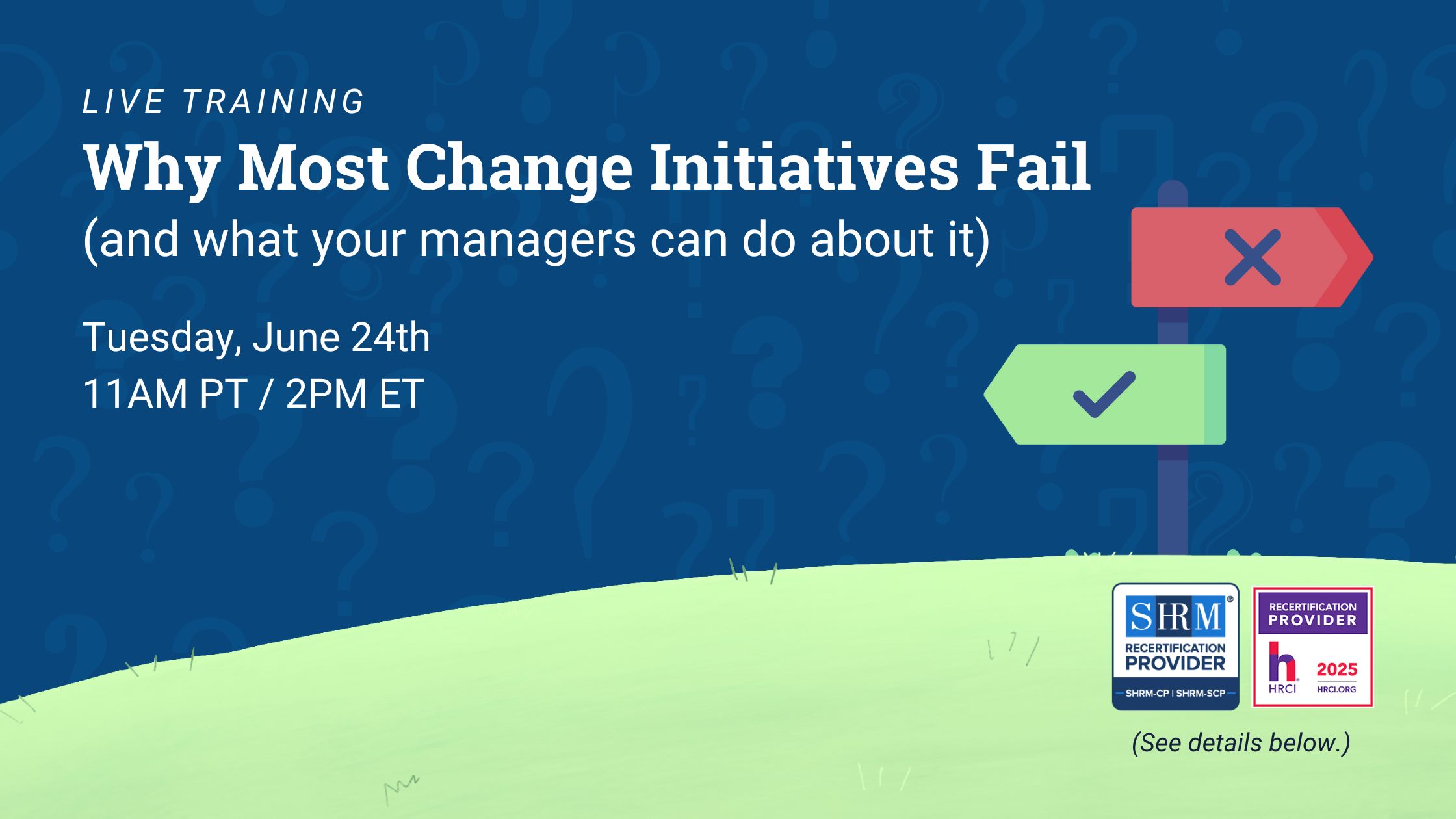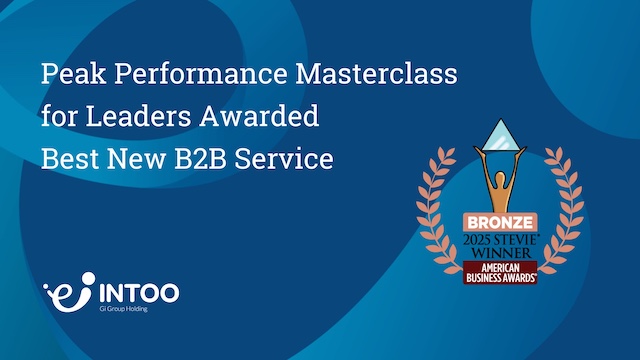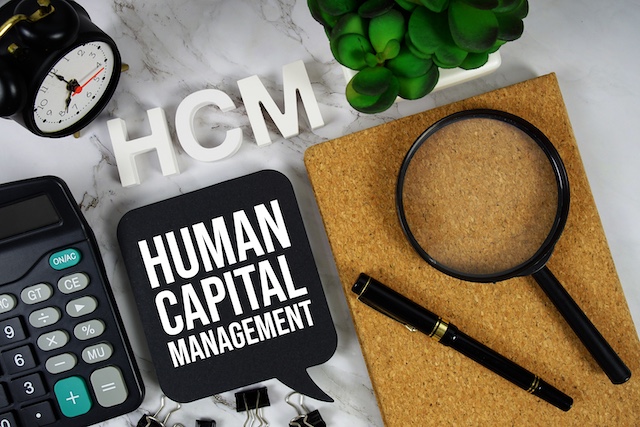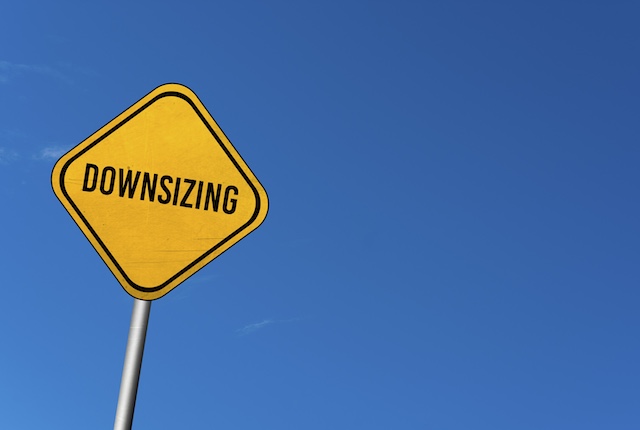The coronavirus crisis has brought many sensitive organizational management issues to the forefront. HR professionals face challenges related to furloughs and layoffs, diversity and inclusion concerns, and much more. To support the HR community during this pivot period, we recently hosted a timely #TalkHR webinar: Back to the workplace—What’s forever changed, and how to prepare for the transition.
Four expert panelists—Tracie Sponenberg, Chief People Officer at The Granite Group, employment attorney Kate Bischoff, HR leader and #HRSocialHour Podcast host Jon Thurmond, and outplacement veteran Caroline Vernon—joined our live chat and Q&A to tackle questions from the audience about pressing organizational management topics.
Below is a condensed version of the Q&A, edited for clarity. Some of the questions answered include:
- How does this time compare to a few months ago, soon after the coronavirus crisis first hit the U.S.?
- What has changed, and what do you think has changed forever?
- For employers who are specifically in the situation of furloughs potentially becoming layoffs, what should they be doing, from an organizational and a legal standpoint?
- Has the increased push on DEI (diversity, equity, inclusion) issues impacted you and your people and your workplace?
- How HR can be more of a partner in these times, and what are some of the best practices for building that inclusive anti-racist culture?
- How are you handling, assessing, or addressing concerns around mental health and wellbeing?
- How should HR professionals handle supporting executive management decisions they don’t agree with?
- What advice do we have for HR professionals who are entering the job market right now, during these times?
How does this time compare to a few months ago, soon after the coronavirus crisis first hit the U.S.? What has changed, and what do you think has changed forever?
Jon: Quite a bit has changed since April. Back then, it was still fairly new for most of us. We were trying to figure out how to make things work logistically—how are we going to track cases, work with employees that are positive, and what have you.
Now, we’re in this maturation phase. Unfortunately, we’ve seen a lot of numbers go up across the country, which is disheartening, to say the least. But I know at least personally I’m in a much better place emotionally about it from the standpoint that we’ve had time to digest and realize it’s just something that we need to continue to work on and improve upon.
I’d like to think that HR has changed substantially. We always talk about being fluid and flexible, but now we’re seeing it. People have literally turned on a dime. I think the vast majority of people I’ve talked to have demonstrated it extremely well. I’d like to think we’ll sustain that going forward.
Kate: With the exception of the workplace jobs that we absolutely need to have, making widgets or being in front of customers, I think we will see a collapse of the commercial real estate market, because we won’t need to have as much office space anymore. A lot of us have become comfortable working from home, or it’s just a safer option for us all the time. While I love being around people, I understand where I’m making connections in different ways. I’m desperate to travel, but that may be something that we don’t do as much anymore, either.
Tracie: Like Kate said, business travel has changed. Even our company, where we were so used to getting people in person and have 45 customer-facing locations, has figured out how to do meetings remotely. We learned a lot that we won’t go back to anytime soon. We have a fair amount of people working remotely who will probably continue to do that. I’m seeing so many companies go remote first or at least having that option.
The other thing is, we’ve learned a lot more to lead with empathy. Early in my career, we were always told: Keep a distance. But keep a distance doesn’t work anymore. People are messy, wonderful, complicated individuals, and we need to embrace that. We’ve seen that never more so than recently. we have to lead as people and share our own thoughts. And we have to understand when people are going through difficult things. Leading with compassion as a business objective is something that we have really, really learned over the last four or five months.
For employers who are specifically in the situation of furloughs potentially becoming layoffs, what should they be doing, from an organizational and a legal standpoint?
Kate: In March and April, when [employers] were looking at doing mass layoffs, because of the economic conditions of COVID, we didn’t need to follow the WARN Act, which is the Worker Adjustment and Retraining Notification Act [that requires] you to give 60-days notice of that ultimate end of termination.
Now, we are six months into this. We can see trends in the science of where things are going. We can make forecasts of the economics because we can look at Goldman Sachs and JP Morgan and where they are. So you’re going to need to start giving those notices. And that’s that 60-day requirement.
Has the increased push on DEI (diversity, equity, inclusion) issues impacted you and your people and your workplace?
Jon: I live in the capital of the Confederacy, so it’s very, very impactful for me personally. Professionally, we have a very diverse organization here. We’ve strived for a long time before any of these things kind of came to a head. Living here in Richmond and watching statutes being pulled down and [hearing] the conversations going on around all those things—you can’t help but be affected by that.
I’m really fortunate to have a community that is open and willing to have those conversations and not be combative unnecessarily. Look, I still don’t understand things. I’ve been doing this a long time. In HR, we’re supposed to love people, and people are great, but there’s still a lot to learn. For me, a lot of things has been very eye opening. I’ve been able to take part in chats and do different things with people with extremely different perspectives from mine. I appreciate that and respect their perspective and want to hear it and try to understand it as best I can.
Tracie: Our state is the polar opposite. I think we’re the third whitest state in the country. So we have a long way to go as a state. As a company, we have a really wonderful inclusive culture. That’s a great starting point, but we’ve had lots of wonderful conversations with how we can do better within the organization. That’s something I’m really looking forward to really changing and growing.
Personally, this is a growth area for me. Like Jon, it’s something I was just gutted by. I remember sending something out about the senseless murder of George Floyd on a local listserv that went to thousands of people. And I invited people to a series of chats—friends and I get together and just kind of talk things out: How do we grow, and how do we learn, and how do we change, and how do we recognize our own biases? I had one out of the thousands of people join.
It’s uncomfortable. As HR professionals, we don’t like to be uncomfortable. But we have to get uncomfortable because that’s where growth happens. We have to talk about these things with our colleagues, with our friends, with our leaders, with our own people. We have to have these conversations so we can do better and we can grow as companies and as people.
Kate: I live in Minneapolis, and the entire month of June, it was as if my practice did not talk about COVID at all, because my clients were most impacted by the murder of George Floyd—realizing that what was happening in the protests and why police brutality is so bad is because racism isn’t just with the police, it’s throughout our society.
So a lot of my clients were looking at, “Okay, we know this may be in our workplace. How are we going to start to work to make sure that it doesn’t affect our workplace, that we limit the risk that it poses to us, whether it is through doing research groups and reading various books, whether it is taking new tactics on how we’re going to bring diversity into the workplace, how we train managers and how to connect with people so that can be more inclusive?”
All of those were things that my clients were thinking about in June. We’re a little bit back to more COVID now. We have a mask mandate as of today. But this certainly has this increased push and increased realization because we’ve shined this light on the mold that’s growing in our workplaces.
How HR can be more of a partner in these times, and what are some of the best practices for building that inclusive anti-racist culture?
Tracie: Do the work. It’s hard work. Do the self-reflection. You have to be educated yourself to be able to help your companies. Partner with people who can help you, too.
Jon: Tracy said it well. You have to be willing to have the conversations, and you need to be willing to face your fears, look in the mirror, whatever term you want to use. You have to be able to do it and have those open conversations. They’re not fun for any of us, nor should they necessarily be. But if we really want to learn and grow and be better people, not just employees, production workers, but be better human beings to each other, we have to do that.
Kate: The other thing that I would say is we, as HR professionals, as we’re doing the work, we have gotten a bit complacent in which we don’t necessarily push back for fear of our own positions, for fear our own paychecks. It’s time now it’s time to grow a titanium spine. When we see a situation where the black candidate isn’t getting the kind of attention she should be getting, we should push back and say, “Why did you eliminate this candidate? What factors were in play?” If we hear comments like, “We just didn’t think she’d fit in,” well, why didn’t she fit in? Asking those questions, being unafraid to do that because it’s best for your organization and it’s best for the candidates….
We are maybe the face of management to employees, but we are their advocate to management, and we have to advocate. We’ve got to get back into that role, be brave and take a stand and ask those questions and challenge your own biases and challenge others. If there’s one good thing to come out of this awful situation is we’re going to do better. We have to do better. And we have to change.
How are you handling, assessing, or addressing concerns around mental health and wellbeing?
Tracie: This is something unlike anything that we’ve seen, but we’re trying to do everything that we can to provide the resources that people need, and to open ourselves up, if anybody needs anything. We need to be people first, and that applies to things like mental health and wellbeing too.
One of the things that we did was we divided up our States. We have six states among our HR team, and we had our HR team in with our managers and then people within our locations, just asking the question, “How are you doing? Anything we could do for you?” You learn a lot that way. Our CEO and COO have visited all of our locations, socially-distanced, mask-wearing, checking in. You learn a lot. But you want to provide those resources, provide that time, provide that flexibility, provide that grace that maybe we’re not used to providing, and really meet people where they are.
How does one handle supporting executive management decisions when you don’t agree with the decisions being made regarding the COVID-19 pandemic regarding employees’ flexibility and remote working, especially when employees feel the company is not considering their health?
Tracie: Use Kate’s titanium spine, that she talked about, and speak up. It’s hard, but speak up and share what people are feeling. That’s a very personal decision. That would be hard for me, supporting something that maybe isn’t something [I agree] with, or something that’s illegal, unethical, or immoral. That’s where I would draw the line. Now’s the time to speak up and use your voice.
Kate: This very nice lady asked, “What should we tell a CEO who doesn’t necessarily want to follow the rules?” And my response is, “Buck up buttercup, this is where we are. This is what the new rule is.”
But [this may have been] the leadership’s own management styles for decades, whether it’s the Jack Welsh leadership style or the command-and-control kind of leadership style. [The leaders] are in fear because they can’t use that [style] either. We need to be empathetic to those leaders who are struggling with how to change this, as well as the employees who are struggling, too. We need to come to them and say, “I know this is what is most comfortable for you. I know this is what is most convenient for you, but we don’t have a choice, in recognizing with empathy that they’re struggling, because their regular way of managing is changing.” I want to have empathy for everyone.
What advice do we have for HR professionals who are entering the job market right now, during these times?
Caroline: Even though there are times are difficult having, it’s not impossible. So that optimistic, very targeted, very proactive job search is going to need to be conducted now more than ever before. So if as people are entering the job market, if you haven’t already built a community, build a community around you for support and thought leadership and everything else. Landing a job in this economy can be done. Think outside the box. Think about organizations that are looking for qualified talent right now. Being, being open to a new industry is something that we also recommend. Update your LinkedIn profile, too.
The views expressed within this publication are those of the individual authors writing in their individual capacities only—not those of their respective employers. All liability with respect to actions taken or not taken based on the contents of this site are hereby expressly disclaimed. The content on this posting is provided “as is” and no representations are made that the content is error-free.











